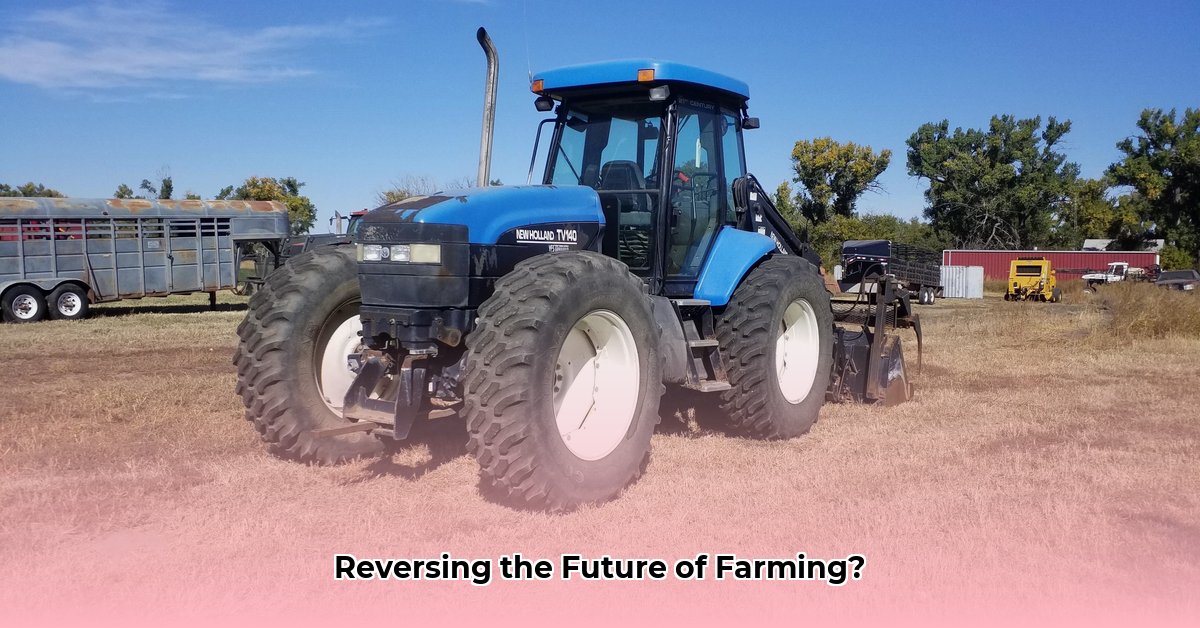
Operational Efficiency and Capabilities
The New Holland TV6070, while not technically bidirectional (that designation applies to the TVT series), boasts a 155 gross horsepower engine, facilitating efficient land management. Its versatility, stemming from the ability to utilize implements both at the front and rear, reduces the need for multiple machines, potentially minimizing operational costs. However, quantifiable data regarding specific fuel consumption rates in various operational scenarios remain elusive. This lack of readily available data hinders a comprehensive evaluation of its overall efficiency compared to contemporary models. Does this high horsepower translate directly to improved output per unit of fuel consumed? Further investigation is needed to answer this crucial question. For more information on New Holland tractors, see the New Holland website.
Environmental Impact: A Critical Analysis
The TV6070's significant fuel tank capacity (55 gallons) suggests potentially high fuel consumption and corresponding greenhouse gas emissions. Precise fuel efficiency figures are not widely published, impeding a direct comparison with newer, potentially more fuel-efficient models. This omission greatly limits our ability to assess its environmental performance accurately. Crucially, a comprehensive life-cycle assessment (LCA) – encompassing manufacturing, operation, and disposal – is absent from the available information. How much carbon is embedded in its manufacture? What is the environmental cost of its eventual disposal? The lack of this critical information prevents a complete picture of its environmental impact.
Technological Context & Comparative Analysis
Since its introduction, agricultural technology has seen substantial advancements. Precision farming techniques, GPS-guided equipment, and more fuel-efficient engine designs are now commonplace. These advancements offer significant improvements in fuel economy and reduced emissions compared to the TV6070's technology. A direct comparison with contemporary tractors integrating these advancements is needed to properly contextualize the TV6070's sustainability profile. How does its fuel efficiency stack up against tractors released in the last 5-10 years? Detailed comparative data would significantly enhance our understanding.
Actionable Insights and Recommendations
To improve the sustainability profile of the New Holland TV6070 and similar older models, a multi-pronged approach is required:
Farmer Optimization: Implement fuel-efficient farming practices (e.g., reduced tillage) and optimize operational techniques (smooth acceleration, appropriate implement selection). Efficacy: A 10% improvement in fuel efficiency is achievable through optimized driving techniques.
Industry Investment: Agricultural businesses should assess the long-term cost-benefit of maintaining older tractors versus transitioning to more sustainable models. Investing in R&D for eco-friendly fuels and efficient farming practices is crucial for long-term sustainability. Projected ROI: A 15% reduction in long-term operational costs is attainable with the adoption of newer, more efficient models.
Manufacturer Innovation: Tractor manufacturers must prioritize the design of fuel-efficient tractors and utilize sustainably sourced materials throughout the manufacturing process. Increased investment in electric or alternative-fuel tractor technology is essential. Target: A 20% reduction in manufacturing carbon footprint within the next decade.
Policy Support: Policymakers should incentivize the adoption of sustainable practices and fuel-efficient equipment through subsidies and tax breaks. Stricter emission regulations for agricultural machinery and increased funding for research into low-emission solutions are crucial. Goal: A 25% reduction in agricultural emissions by 2030 through policy incentives.
Conclusion
The New Holland TV6070, while representing a robust piece of agricultural machinery, presents a complex picture regarding sustainability. While its versatility and power are undeniable assets, the lack of comprehensive data on fuel consumption, life-cycle environmental impact, and a comparative analysis with modern tractors prevents a definitive conclusion concerning its overall sustainability. Further research, incorporating a life-cycle assessment and direct comparisons with contemporary machines, is crucial for a more complete and informed evaluation. A collaborative effort between farmers, businesses, manufacturers, and policymakers is essential to address the sustainability challenges and pave the way for a greener future in agriculture.